Measuring Density | Physics for GCSE/IGCSE - Class 10 PDF Download
Measuring Density
Equipment List

Resolution
Resolution of measuring equipment:
- 30 cm ruler = 1 mm
- Vernier calipers = 0.01 mm
- Micrometer = 0.001 mm
- Digital balance = 0.01 g
Experiment 1: Measuring the Density of Regularly Shaped Objects
The objective of this experiment is to ascertain the densities of standard objects by measuring their dimensions.
Variables:
- Independent variable = Type of shape / volume
- Dependent variable = Mass of the object
Method: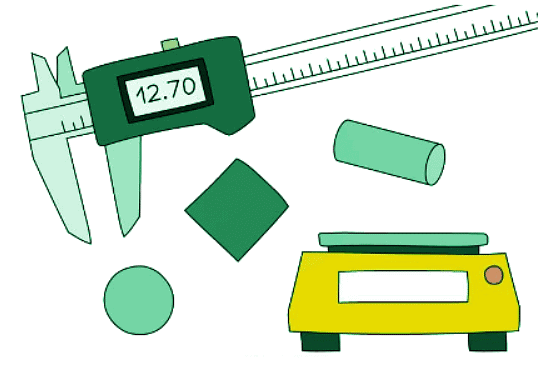
- Place the object on a digital balance and record its mass.
- Measure the object's dimensions using appropriate tools such as a ruler, Vernier calipers, or micrometer based on the object's size.
- Take multiple measurements and calculate the average before determining the density.
A sample of a results table could resemble the following:
Analysis of Results
- Compute the volume of the object based on its shape, whether it's a cube, sphere, cylinder, or another regular form.
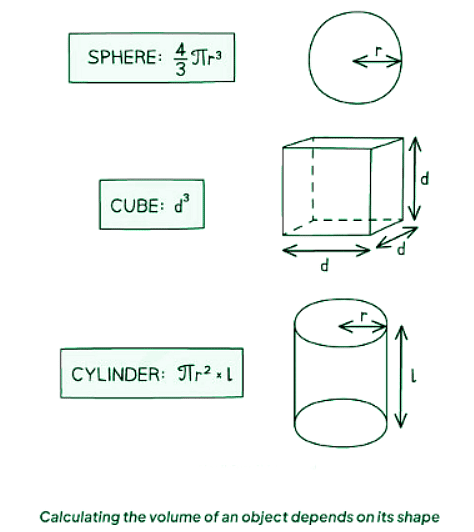
- Remember to convert measurements from centimeters (cm) to meters (m) by dividing by 100.
1 cm = 0.01 m
50 cm = 0.5 m - Using the mass and volume, determine the density using the formula: Density = Mass / Volume
 Where:
Where:
ρ = density in kilogram per metres cubed (kg/m3)
m = mass in kilograms (kg)
V = volume in metres cubed (m3)
Experiment 2: Measuring the Density of Irregularly Shaped Objects
The objective is to determine the densities of irregular objects using a displacement technique.
Variables:
- Independent variable: Varied irregular shapes or masses of objects being tested.
- Dependent variable: Volume of water displaced by the irregular objects.
Method: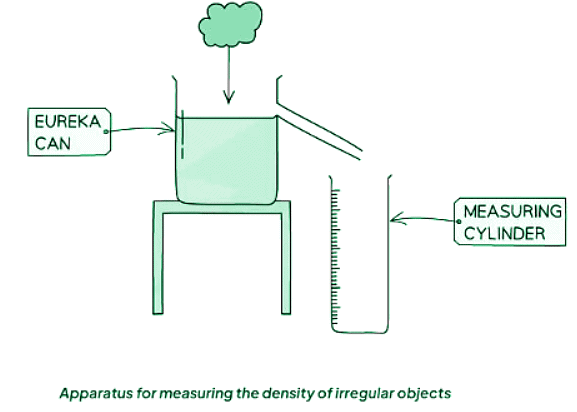
- Place the irregular object on a digital balance and record its mass.
- Fill the eureka can with water just below the spout level.
- Position an empty measuring cylinder under the spout of the eureka can.
- Gently submerge the object into the water in the eureka can.
- Measure the volume of water displaced in the measuring cylinder.
- Repeat the above steps, calculate the average, and then determine the density of the object.
Another approach involves placing the object in a graduated cylinder filled with a known volume of liquid, and subsequently measuring the change in volume.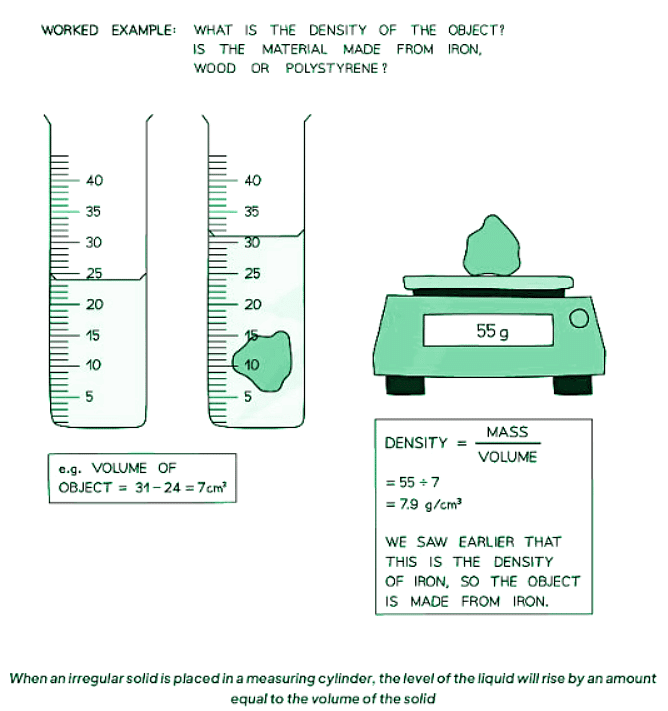
- Once the mass and volume of an object are determined, its density can be calculated.
- A sample table of results could appear as follows:
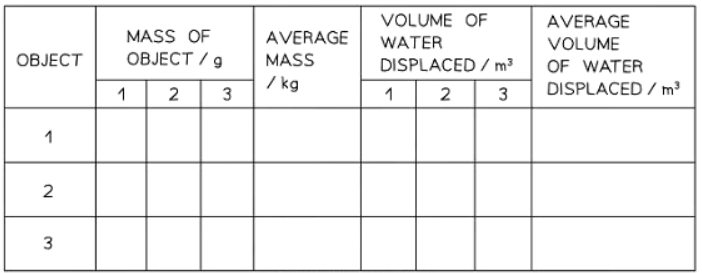
Analysis of Results
- The displaced water volume equals the volume of the object.
- After determining the mass and volume of the shape, density can be calculated using:

Experiment 3: Measuring Density of Liquids
The objective of this experiment is to calculate the density of a liquid based on the variation in its mass.
Variables:
- Independent variable: The volume of water added.
- Dependent variable: The mass of the cylinder.
Method: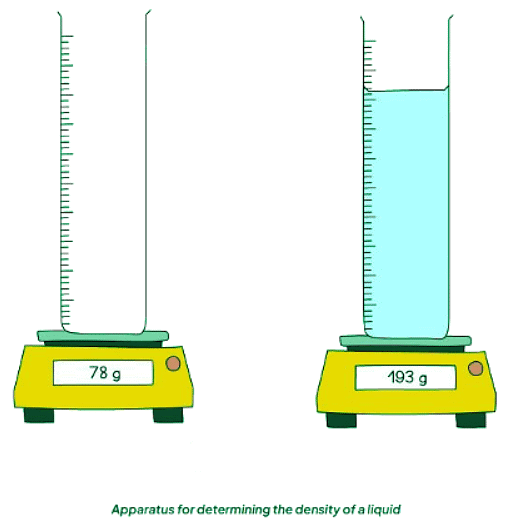
- Place an empty measuring cylinder on a digital balance and record the mass.
- Fill the cylinder with the liquid and note the volume.
- Record the new reading on the digital balance.
- Repeat these steps, calculate the average, and then determine the density.
An example of a results table:

Analysis of Results
- Calculate the mass of the liquid by subtracting the final reading from the initial reading.
- Mass of liquid = Mass of cylinder with water - mass of cylinder.
Remember:
- Convert between grams (g) and kilograms (kg) by dividing by 1000.
- 1 kilogram (kg) = 1000 grams (g).
Mass and Density Calculations
- 1 gram is equivalent to 0.001 kilograms.
- 78 grams is equal to 0.078 kilograms.
Once the mass and volume of the liquid are established, density can be calculated using the equation:
Evaluating the ExperimentsL
Systematic Errors:
- Always ensure that the digital balance is calibrated to zero before measuring mass.
- When determining the density of a liquid, remove the measuring cylinder and zero the balance before adding the liquid.
Random Errors:
- Length measurements represent a significant potential source of error in this experiment.
- To mitigate this, ensure to take repeated measurements and calculate an average.
- When placing the irregular object into the displacement can, exercise caution to prevent water splashing. Dropping the object from a height can lead to inaccurate volume readings.
Safety Considerations
- Exercise care when handling the glassware utilized in this experiment.
- Avoid pouring water into the measuring cylinder while it's on the electric balance to prevent the risk of electric shock.
- Maintain a standing position throughout the experiment to promptly address any spills.
|
129 videos|188 docs|35 tests
|
FAQs on Measuring Density - Physics for GCSE/IGCSE - Class 10
| 1. What is density and how is it measured? |  |
| 2. How do you measure the density of regularly shaped objects? |  |
| 3. How do you measure the density of irregularly shaped objects? |  |
| 4. How do you measure the density of liquids? |  |
| 5. Why is measuring density important in science and everyday life? |  |




















